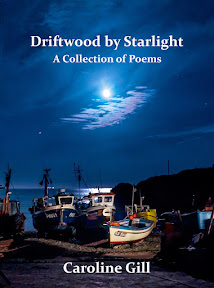 |
| Lamp post with tree reflections ... where is Mr Tumnus? |
Lucy Pevensie found Narnia by pushing through the coats in the wardrobe in the professor's house, or so we are told in the narrative of The Lion, the Witch and the Wardrobe by C.S. Lewis. As you can see from the photo below, our home patch here in Suffolk has had the appearance of Narnia for much of this past week.
The photo above was taken some time ago in the Cathedral Close at St Davids in Wales (near The Thirty-Nine Steps, but I don't want to mix my favourite stories!). I always imagined that this lamp post, with its reflected tree branches, must have been similar to the one known to Lucy and Mr Tumnus the faun.
I am greatly enjoying one of my Christmas presents, The Lion's World: A Journey into the Heart of Narnia by the new Master of Magdalene College, Cambridge and former Archbishop of Canterbury, Rowan Williams.
I first read about the book in The New Statesman last August. John Gray, the lead reviewer for that publication, wrote a review entitled 'Beyond the Wardrobe Door', with the subtitle, 'An Archbishop interrogates Narnia'. I read it at the time on a train journey from London to Swansea, and knew immediately that I would like to read what Gray describes as 'this mind-opening little book.'
The Lion's World is beautifully produced by SPCK (with a cover flap that doubles as a bookmark). There is a back cover endorsement by St Andrews theologian, Professor Tom Wright, who says,
'Those who have tried to debunk Lewis and his children's books will find Williams
more than a match for them ...'
I have not yet reached the end of The Lion's World, but I am already in agreement with the assertion inside the front flap that this book is not only 'a rewarding and ultimately joyful read', but also one that highlights the allegorical and 'powerful spiritual insights' on offer in The Chronicles of Narnia.
I confess to a lifelong deep love of the book, The Lion, the Witch and the Wardrobe. I have always found the film disappointing, partly because the Pevensie children are not quite as I imagine them. However, we have been re-watching the film (a good thing to do when snowbound!), and I have to admit that I have greatly enjoyed the remarkable winter scenery. BBC Winterwatch at Aigas may have come to an end with its stunning footage of real wild beavers, but who could resist their talking substitutes in Narnia?
As I say, I have yet to finish the book, so will refrain from commenting on my view of the depiction of Aslan in this new volume. However, countless others have left Narnia footprints ahead of me through the snow, and you might enjoy this fascinating and substantial post by Mark Meynell on the Quaerentia blog. Mark explores the significance of Narnia, and 'why it matters' to Francis Spufford, as outlined in Spufford's work, The Child that Books Built.
Before I close this post, I would like to refer back to one of my favourite blog post readings of 2010. The post was written in three parts by Rosie of Leavesnbloom. You can find Rosie's writing about the C.S. Lewis trail ... here and here and here.
"I did not say to myself,
'Let us represent Jesus as he really is
in our world by a lion in Narnia.'
I said, 'Let us suppose
that there were a land like Narnia
and that the Son of God,
as he became a man in our world,
became a lion there,
and then imagine what would happen.' "
'Let us represent Jesus as he really is
in our world by a lion in Narnia.'
I said, 'Let us suppose
that there were a land like Narnia
and that the Son of God,
as he became a man in our world,
became a lion there,
and then imagine what would happen.' "
C.S. Lewis








1 comment:
That sounds an interesting book. I loved the Narnia books as a child, but have never wanted to see the film. I rarely feel that films do justice to books (other than The Leopard) though some are successful re-imaginings (Apocalypse Now is a brilliant re-imagining of Conrad's Heart of Darkness for example)
Post a Comment